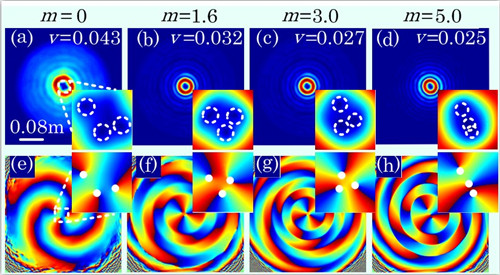Recently, topological charge, which can act as a measure of the angular momentum of vortex beams, has been established as a robust information carrier that is capable of being transmitted over numerous kilometers without any free-space path loss. It suggests that this technology is ready for operational deployment. However, as communication links are further extended to accommodate it, turbulence accumulated during propagation will result in the transmitted orbital angular momentum (OAM) signals becoming severely distorted, even under conditions of relatively weak turbulence. Apart from familiar turbulence effects such as beam wander, beam spreading and scintillation, it will also be important to take into account vortex splitting effects, which affect the precision of OAM signal reception. Vortex splitting refers to the topological charge of vortex beams breaking up where l >1 to give l individual single-charge vortices. These vortices cross the transverse plane quasi-independently. Generally, the larger the vortex splitting ratio, the smaller the average OAM value that can be measured.
The research group led by Prof. Lixin Guo from Xidian University, propose a new method to mitigate vortex splitting in free-space optical communication by using the self-healing effect of auto-focusing Airy vortex beams (AAVB). The value of this work is that two common modes of coupling autofocusing Airy beams with vortices are unified by introducing a parameter that controls the AAVB intensity gradients. Through the action of self-healing effect, the energy of optic field flows inward radially, trapping the individual vortices. For this to be effective, the right intensity gradients need to be selected for different degrees of turbulence, thus improving the accuracy of OAM reception. The results of this work have been published in Chinese Optics Letters, Vol 17, Issue 4, 2019 (Xu Yan, et al. Free-space propagation of autofocusing Airy vortex beams with controllable intensity gradients).
“This is a very valuable study that realizes the simultaneous modulation of beam trajectory and focus intensity without destroying the original AAVB structure, providing an effective new way of reducing vortex splitting” said Prof. Guo.
For now, the research regarding vortex beam propagation is still focused on weak turbulence conditions. The realization of effective transmission and reception of OAM signals under conditions of strong turbulence and scattering media will be the focus of the group’s future work.

Fig. 1. (a)-(d) Intensity distributions of AAVBs with l = 3 for different values of m = 0, 1.6, 3.0, and 5.0 after propagation through a turbulent optical channel. (e)-(h) Phase cross-sections of AAVBs corresponding to (a)-(d), respectively.


